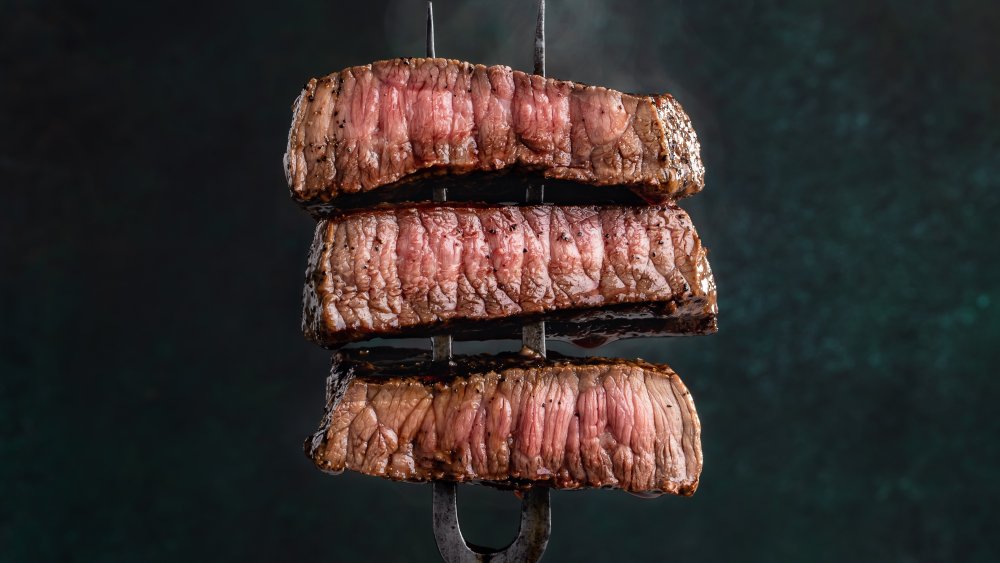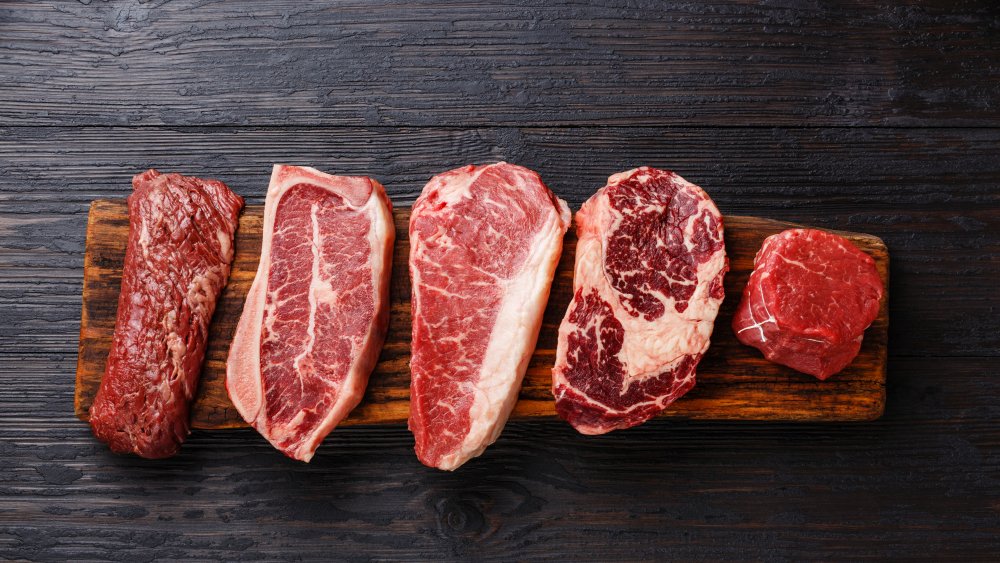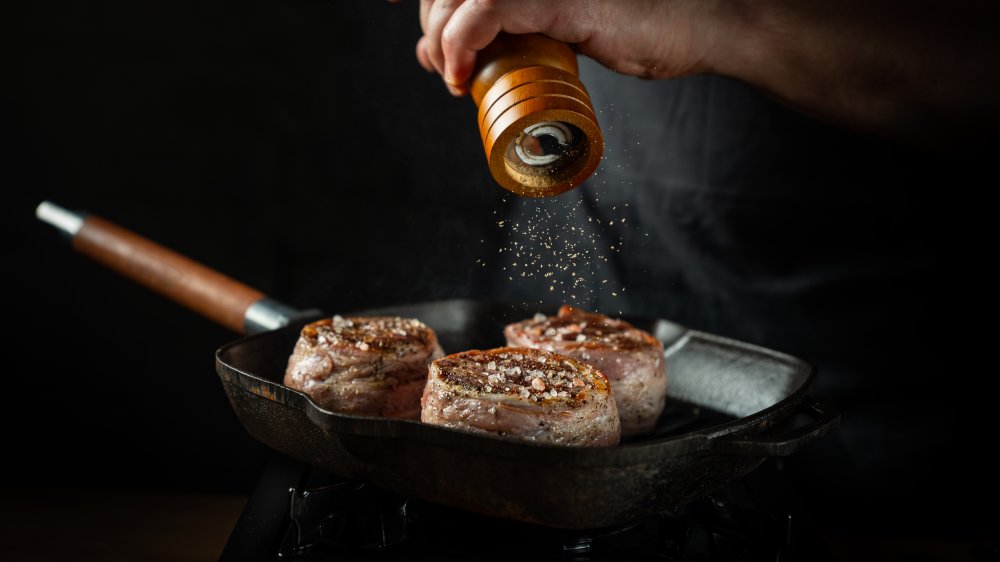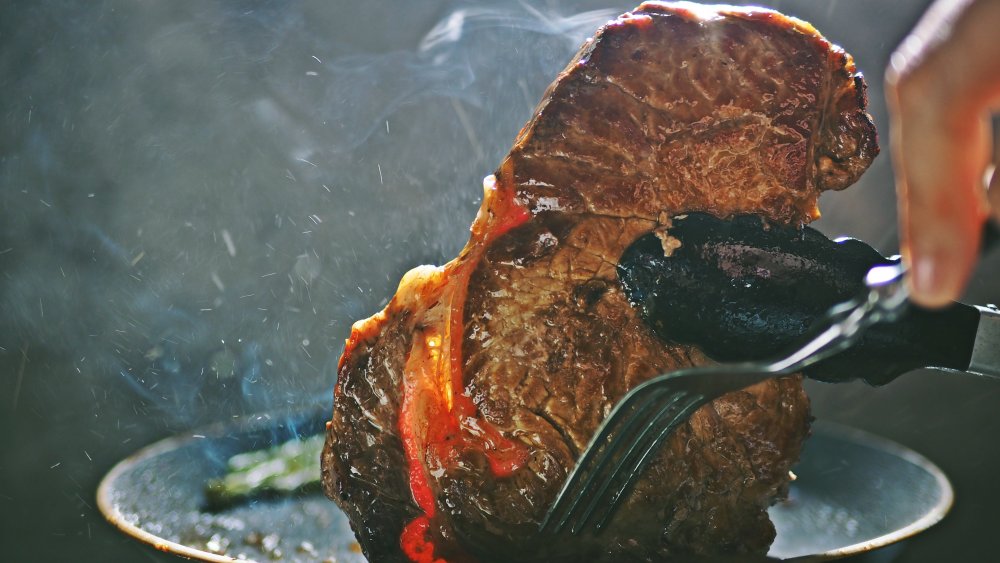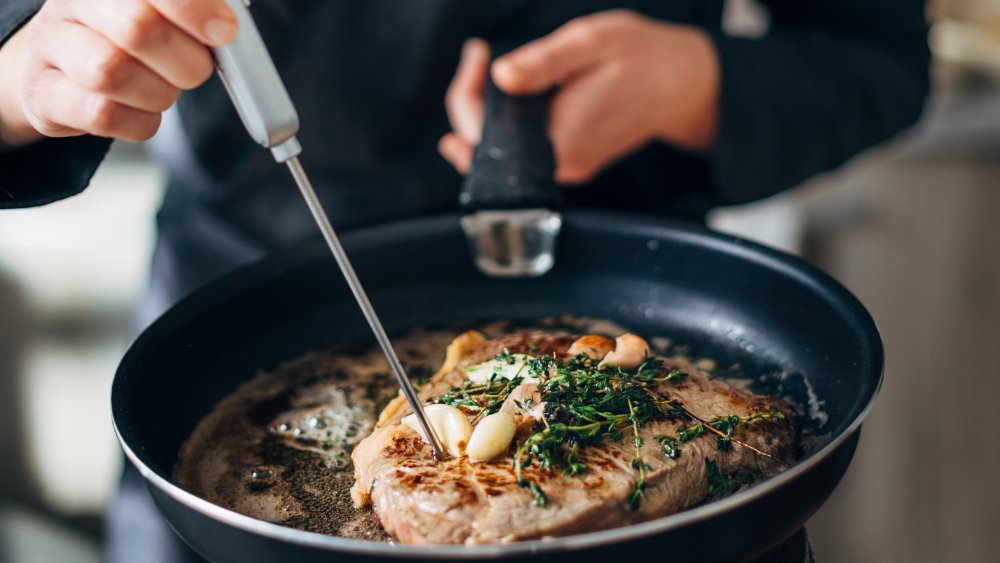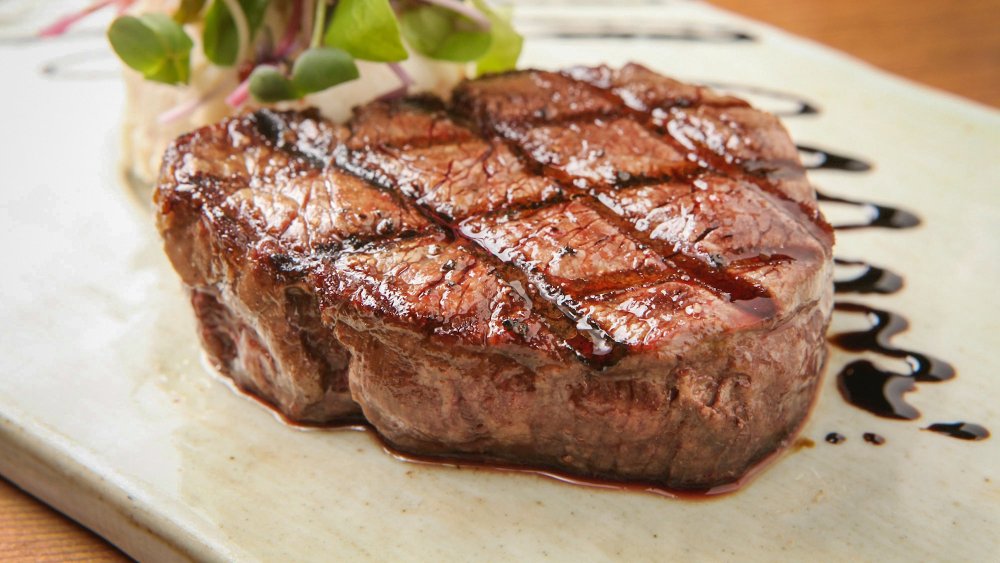Chef Breaks Down The Best Way To Cook A Steak
Steak is pretty pricey, and getting more expensive all the time. Still, it's far less expensive to cook your own steak at home than it is to go out to a high-dollar steakhouse where you might wind up needing a second mortgage just to pay for the meal. If you're a little nervous about your steak-cooking technique and fear that you might mess up and turn a piece of meat that cost maybe $12 to $15 per pound into lightly charred shoe leather, well, we feel you. The higher the price, the more pressure not to screw up. Still, with a few tricks up your sleeve, the perfect steak need not be any more difficult to achieve than a perfectly meh cup of cheapo instant ramen.
In order to bring you the very best advice, we sought out a beef expert: Michael Ollier, senior corporate chef for the Certified Angus Beef ® brand, spoke with Mashed on this all-important topic and shared how you can be sure that your steak turns out perfect each and every time.
Choose your steak wisely
Ollier says that in order to cook the perfect steak, you've got to choose a high-quality piece of meat to begin with. Sure, you can only buy the cut of steak that fits your budget, and not all budgets stretch to Wagyu. Still, with whatever steak you do select, Ollier suggests you choose a piece that's got plenty of marbling. He describes this as looking like "little, white flecks of fat within the lean meat," eplaining that the marbling is what makes a steak so tasty. As he describes the process, "These flecks will melt when cooked and make each bite juicy, flavorful and melt-in-your-mouth tender."
Keep your seasonings simple
According to Ollier, when you're cooking a steak, this isn't the time to go all crazy experimental with the spice cabinet. He says that "a high-quality steak with a lot of marbling doesn't need anything but coarse kosher salt and fresh cracked black pepper," explaining that these coarser varieties of condiment will deliver better texture and flavor than the finer particles that may come out of your tabletop salt and pepper shakers. In fact, he says coarser is better when it comes to any type of seasoning, suggesting, for example, that granulated garlic be used in place of garlic powder.
Sear your steak quick and hot
Ollier's steak-cooking technique calls for using a grill, and one where you can control the temperature zones to some extent so that you have one area that is very hot and another area where the temperature is lower. He calls the cooler area the "safe zone," and says that this makes for an ideal spot to move any steaks that may be cooking too quickly on the hotter area of the grill.
As to why you need to sear your steak over high heat to give it a crust, Ollier explains that this creates something known as the Maillard reaction, which is a chemical interaction between the steak's amino acids and simple sugars that gives the browned meat such a delicious flavor and aroma. As Ollier declares, "Having a nice dark crust, especially because of its contrast to a juicy pink center, is such an important part of a perfectly grilled steak."
Always test for doneness
Ollier says that no matter how you like your steak, be it so blue it's practically still on the hoof or so well done it delights the heart of a food safety inspector, you should always use a meat thermometer, and you should know how to use it correctly. As for the latter, he says to insert the thermometer into the steak's thickest part, which will usually be in the middle and should be away from any bone or fat.
Although Ollier did not provide any temperature ranges, a handy chart available via What's Cooking America gives the following guidelines: 120 to 125 degrees is rare, 130 to 135 medium rare, 140 to 145 medium, 150 to 155 medium well, and anything over 160 degrees is considered well done.
Give your steak a break
While Ollier urges the use of a meat thermometer, he does not advocate cooking your meat until it reaches the desired temperature. Instead, he advises removing the steak from the grill when it's about 5 degrees below whatever degree of doneness you're going for. You should place the steak on a plate, cover it loosely with foil, and then leave it alone for about five minutes. The steak's residual heat will allow it to keep cooking for an additional few minutes as it rests, but, as Ollier says, more importantly, "this time gives the juices the opportunity to redistribute throughout the steak."
